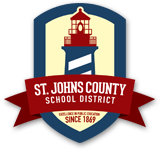A specific learning disability is defined as a disorder in one or more of the basic learning processes involved in understanding or in using language, spoken or written, that may manifest in significant difficulties affecting the ability to listen, speak, read, write, spell, or do mathematics. Associated conditions may include, but are not limited to, dyslexia, dyscalculia, dysgraphia, or developmental aphasia. A specific learning disability does not include learning problems that are primarily the result of a visual, hearing, motor, intellectual, or emotional or behavioral disability, limited English proficiency, or environmental, cultural, or economic factors.
A student may be determined eligible as a student with a specific learning disability if there is evidence of all of the following:
- When provided with learning experiences and instruction appropriate for the student’s chronological age or grade-level standards, the student does not achieve adequately for his/her age or grade-level in one or more of the following areas:
- Oral expression
- Listening comprehension
- Written expression
- Basic reading skills
- Reading fluency skills
- Reading comprehension
- Mathematics calculation
- Mathematics problem solving
- The student does not make adequate progress to meet chronological age or grade-level standards in one or more of the areas identified in 1. (above) as determined through a process based on the student’s response to scientific, research-based intervention. Click here for more information Florida’s Multi-tiered System of Supports and Response to Intervention (MTSS/RtI).
- The student’s performance is not primarily the result of one or more of the following:
- A visual, hearing, or motor disability
- Intellectual disability
- Emotional or behavioral disability
- Cultural factors
- Irregular pattern of attendance or high mobility rate
- Classroom behavior
- Environmental or economic factors
- Limited English proficiency
- The student demonstrates a need for special education.
HOW YOU CAN HELP
- Be sure your child knows that a learning disorder is not anyone’s fault.
- Be positive. Increase your child’s confidence by emphasizing his or her strengths.
- Work with your child’s teacher(s). If you have concerns, discuss then with the teacher and work together to develop new approaches.
- Read aloud to your child.
- Supply your child with a homework notebook, checked daily by parents (and teacher.)
- Click here for resources for working with your child.


